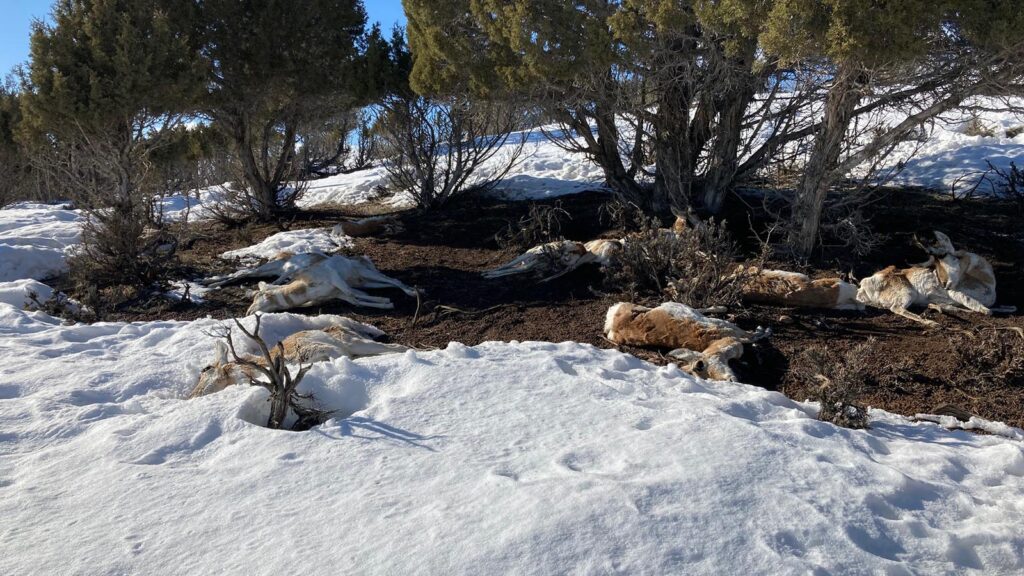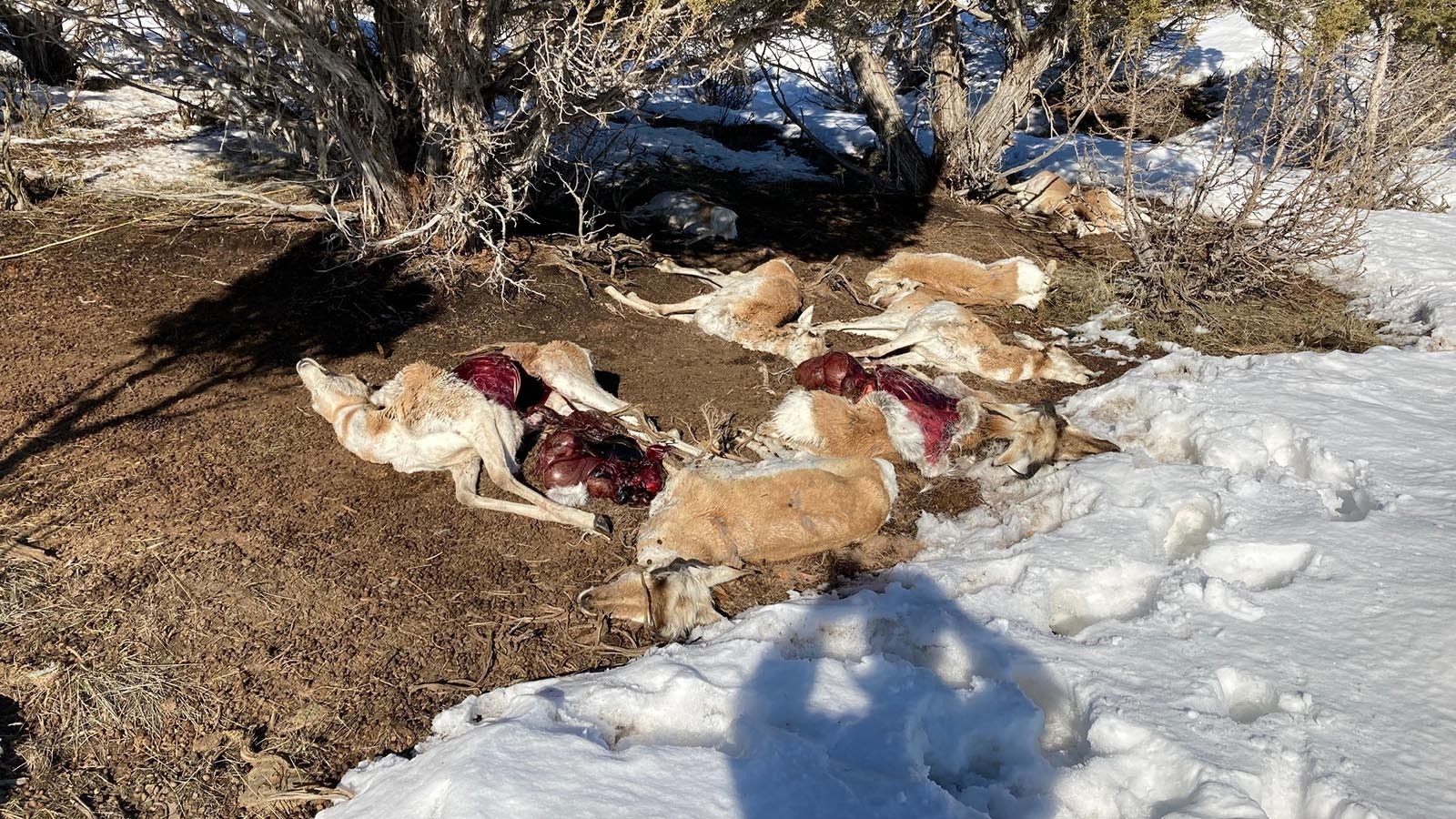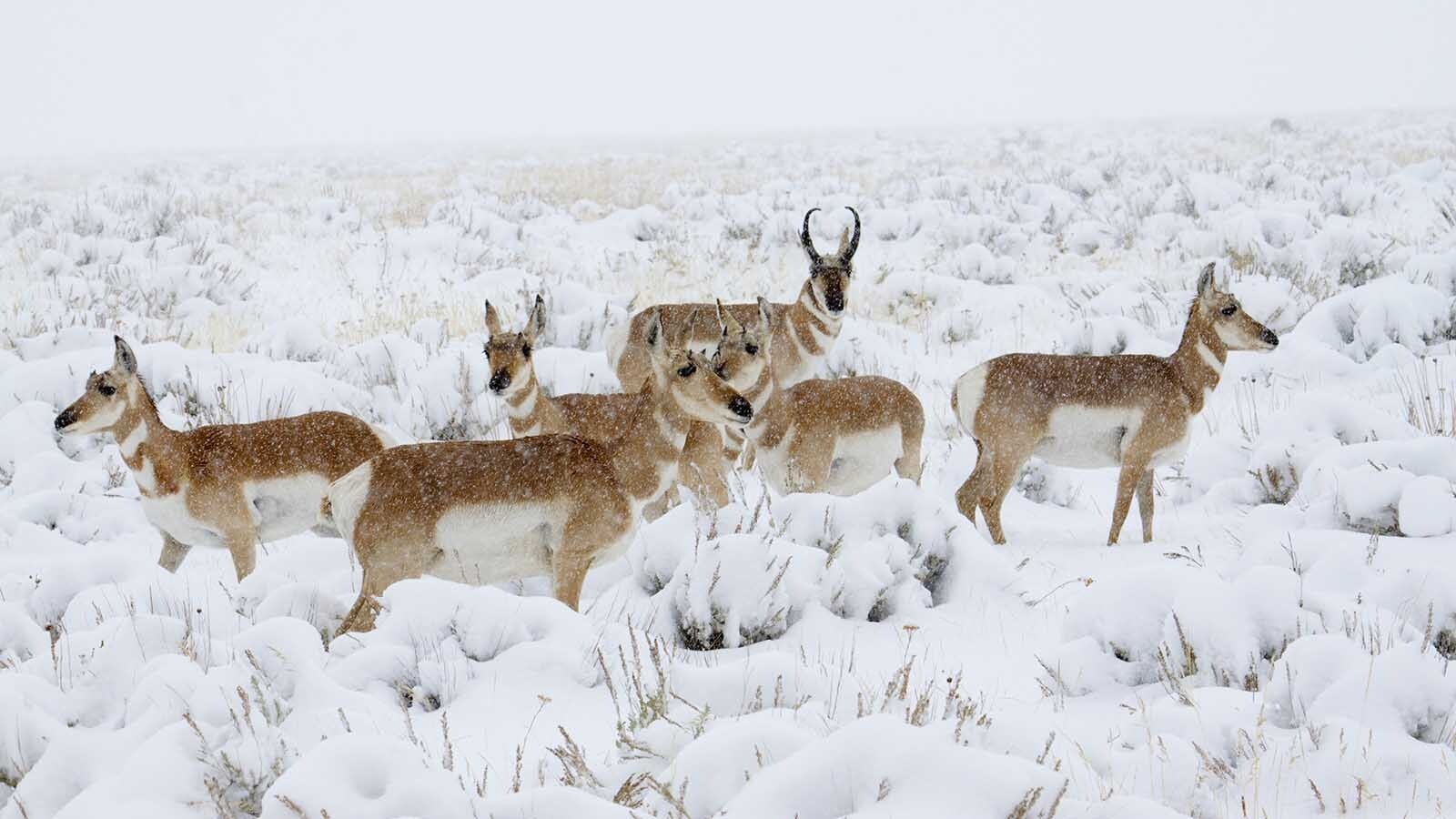RELATED: Snowplow Drivers Hauling Off Wildlife Carcasses All Across Wyoming
The wildlife winter kill in southcentral Wyoming is the worst anybody there can remember, some locals are saying.
“It goes on for miles: dead animal after dead animal after dead animal,” state Sen. Larry Hicks, R-Baggs told Cowboy State Daily on Wednesday. “The antelope are dying by the thousands. Starvation is an ugly thing.”
Outfitter and pilot Bo Stacks said that at higher elevations, he’s seen even hardy bull elk struggling to survive.
“Usually the elk are pretty tough and don’t have much die-off,” he told Cowboy State Daily. “There’s still 4 feet of snow on the high ridges. When I fly over, they don’t even look up because they’re so weak. They don’t even do anything.”
Wildlife officials recently predicted that as many as half of the pronghorn (antelope) in parts of Wyoming could die this winter, along with similar numbers of deer.
Hicks and Stacks said it’s going to be much worse than that.
“Our mule deer are probably going to have 50% mortality,” Hicks said. “We’re probably going to be pushing 70-80% of our antelope population that will die this winter.”
That means that 10,000 antelope or more could starve or freeze to death in just the area around Baggs, Dixon and Wamsutter, Hicks said.

Hunting Could Be Shut Down
It’s bad enough that Stacks – who outfits and guides elk, deer, antelope, black bear and mountain lion hunts – plans to significantly scale back his business this fall.
“I’ve completely shut down all of my antelope and all of my deer hunts this year,” he said, and is considering shutting down some future seasons as well.
Hicks said the region has offered some of Wyoming’s best deer hunting, and some of the best antelope hunting in the nation.
“It will probably take six to 10 years, at least, for these herds to recover,” he said, adding that there will probably be a push to shut down hunting seasons entirely in some areas of Wyoming this fall.
Even Worse Than 1949
Stacks said he’s regularly flown small airplanes over the area since 2002, and the conditions for large game animals are “by far the worst I’ve ever seen it.”
Usually, the snow is sparce enough and the winds strong enough to leave significant bare patches for animals to find food and shelter, he said. That’s not happening this winter.
“We’ve got 100% snow coverage” for as far as the eye can see in nearly every direction, he said.
In what few dry patches that remain, “there are bull elk scattered up there by themselves, and they’re starting to die,” he said.
“I have a cabin up by High Savery Reservoir, and usually by the first of April I’m able to drive in there,” he added. “I might have to put tire chains on and blow through some drifts, but I’ve always been able to get in there. Not this year. The snow is still up over the tops of the fences.”
The bleak feeding conditions are as bad as any of the locals can remember, Hicks said. Even old timers who lived through the legendary winter of 1949 have told him what they’re seeing now is worse.
“We got heavy snow early on, then some rain on top of it,” Hicks said. “Then we got those sub-zero temperatures that froze everything up solid, and even more snow.
“The animals just can’t move or paw there way down through the snow to get food anymore.”

Trapped
With all of that snow, much of it set as hard as cement, game herds are simply out of places to go to find food, Hicks said.
“They’re trapped. They can’t migrate anymore. And even if they could, I’m not sure where they could go,” he said. “They’re stuck in the same small dry patches where they’ve been for three weeks. They’ve eaten all the juniper trees. Even the sagebrush is gone in some places. They’re down to eating wood and dirt.”
Hicks said he’s watched the tragedy play out in real time along what county roads are still passable.
“Every night you go out and you can see how badly the antelope are doing and you think, ‘Well, by morning, these three will be dead, and those five over there will be dead too,’” he said. “They’re just laying down in groups and dying.”
Many of the dying animals are pregnant does, “which means we’re also losing an entire fawn crop,” Hicks added.
Things will likely get worse before they get better, Hicks and Stocks said.
“Usually March and April are the worst times for snow and die-off,” Stocks said, and mass winter kill started in January this year.
“Winter is showing no signs of giving up,” Hicks said. “It’s supposed to snow over the next couple of days. Our snow is still piling up.”





